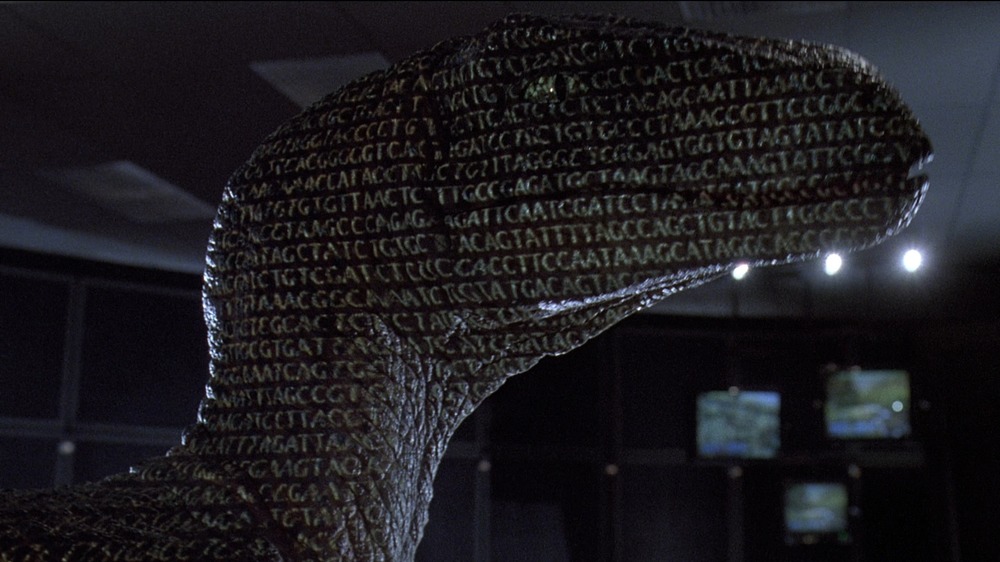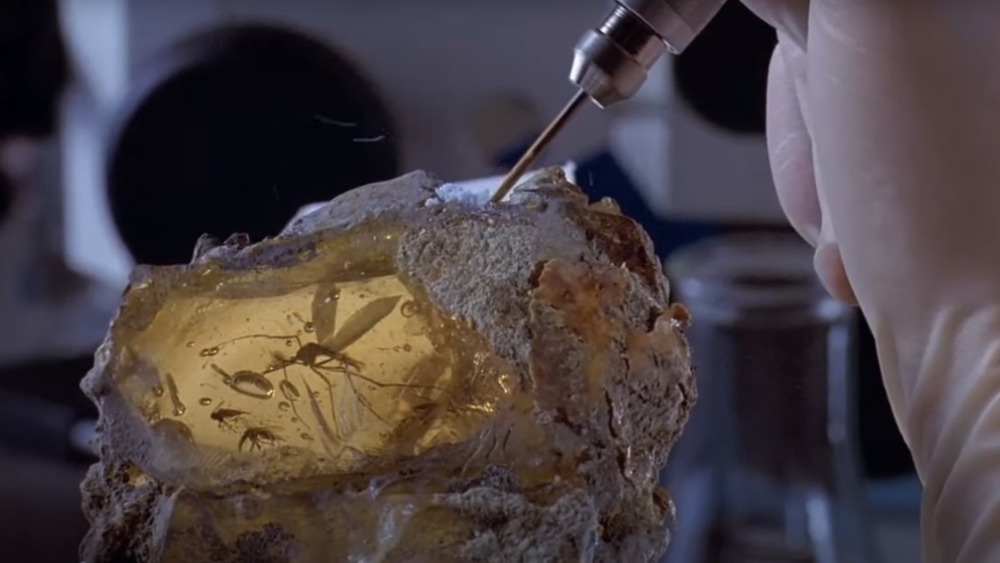The Small Error In Jurassic Park That Completely Changes The Franchise
The 1990 novel Jurassic Park is an agonizingly detailed book. There are, and this is not a joke, several paragraphs dedicated to the problems inherent in feeding dinosaurs when the bacteria that helped them to digest food went extinct millions of years ago, and a long-winded discussion about how park management chose not to clone a lot of larger dinosaurs because they poop too much. Author and verified theme park bummer Michael Crichton was a lot of things, but "inattentive to detail" was never one of them.
By contrast, the film adaptation of Jurassic Park is astonishing in other ways. Expert use of CGI created special effects sequences that movie hipsters can point to a quarter-century later while chanting "still holds up" like it's a personal mantra. Despite only featuring 15 minutes of actual dino footage, the blockbuster ignited the imaginations of adults and children, inspired a generation of future paleontologists, and ensured that Barbasol would remain fiscally solvent well into the next millennium. Details were painted over in broad strokes, in no small part thanks to Steven Spielberg's keen eye for whether or not audiences want to watch a symposium on prehistoric creatures' bowel movements.
But with nearly 30 years behind it, Jurassic Park has now been dissected by fans with all the cautious dexterity of a velociraptor meeting a fresh new cow. Errors have been spotted, ranging from the pedantic (Nedry's Jeep was a four-wheel drive and he never should have had to use a winch) to the oddly silly (the labels on some of the dinosaur embryos are spelled incorrectly). And one flub, pointed out on Reddit's /r/MovieDetails forum, has the potential to put the whole franchise into a tailspin.
In Jurassic Park, sucking less means sucking more
The problem, you see, is the mosquitoes. Those pesky old mosquitoes, enjoying their eternal slumber uninterrupted before being unceremoniously syringed for their precious bodily fluids.
You'll probably recall that the magic of cloning in the Jurassic Park universe is made possible by di-no DNA, extracted from prehistoric mosquitoes frozen in petrified tree sap. The thought process goes something like "mosquitoes drink blood, so dinosaur mosquitoes drink dinosaur blood." With a pipet full of bug lunch, the scientists at the park were basically just some troublesome frog genes away from a paddock full of Barneys.
But as Reddit user MattAPlaton points out, the species of mosquito seen on top of park proprietor John Hammond's cane, and again during the expository Mister DNA tour, presents a problem: it's an elephant mosquito, or Toxorhynchites rutilus. Elephant mosquitoes are notable for two features in particular. First, they're the largest insects of their kind found in the USA. Second — and this is the important part — they don't drink blood. Vector Diseases Control International states that both males and females of the species "feed exclusively on sugary substances -– primarily flower nectar but also plant sap, honeydew, and juices from rotting fruit." While that's great for anyone trying to start a theme park where kids can ogle Mesozoic-era smoothies, it doesn't bode well for recreating a stegosaurus.
There are a couple of explanations. It could be that the useless bug fossils, already pulled from the ground, were used for decorative and informational purposes in a "waste not, want not" move that directly contradicts the whole "spare no expense" routine. The other: Hammond never cloned a single dinosaur after realizing that it was cheaper to hire Stan Winston to fake it for him with animatronics, and Jurassic Park is more like Westworld than we ever suspected.

